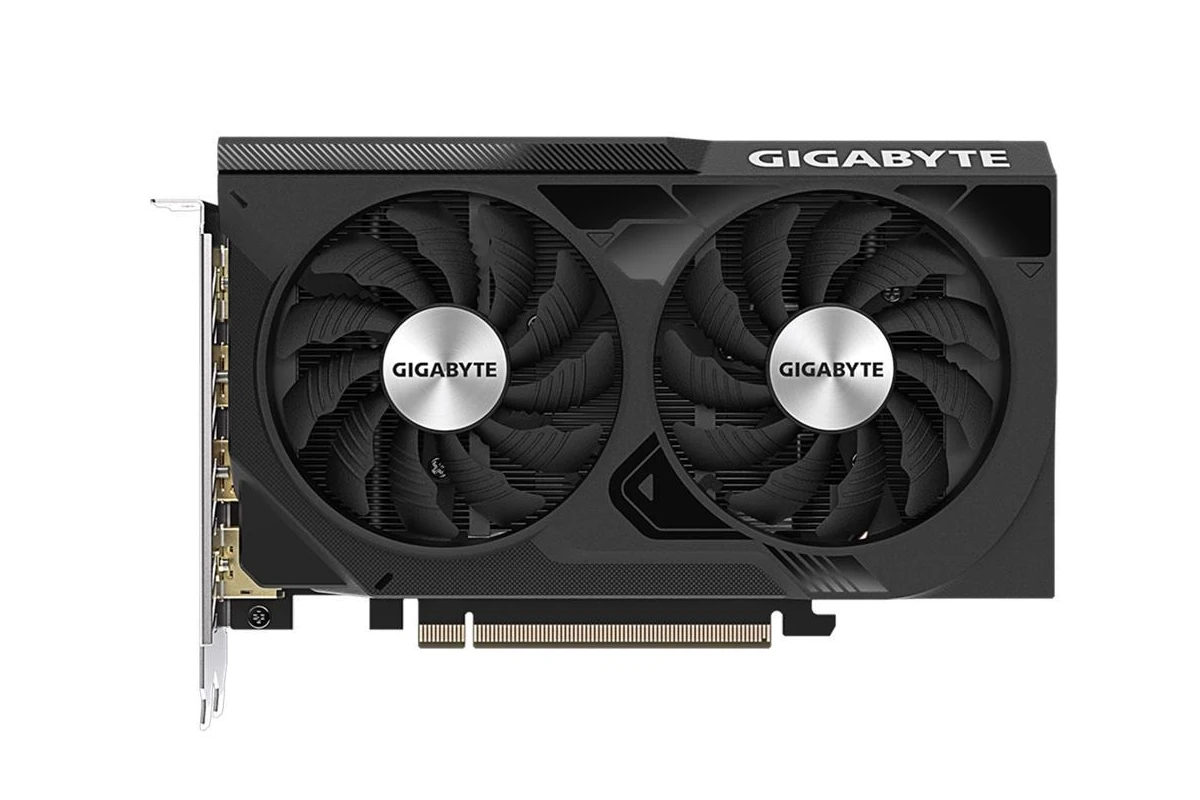NVIDIA is preparing to launch the GeForce RTX 5060 Ti on April 16, 2025, marking the next major step in its Blackwell GPU generation. Positioned as a mid-range powerhouse, the RTX 5060 Ti is shaping up to offer meaningful performance upgrades over its predecessor while keeping power consumption and pricing accessible for mainstream gamers.
With retailers already teasing pre-built systems featuring the card, and board partners expected to go live with listings on April 15, the countdown is officially on.
Specs Overview: GDDR7 Memory, More Cores, Better Efficiency
The RTX 5060 Ti is rumored to pack the GB206 GPU, part of NVIDIA’s new Blackwell architecture. Here’s what the leaks point to:
| Feature | RTX 5060 Ti (Expected) |
|---|---|
| Architecture | Blackwell (GB206-300) |
| CUDA Cores | 6,144 |
| Ray Tracing Cores | 36 |
| Tensor Cores | 144 |
| Memory Configurations | 8GB & 16GB GDDR7 |
| Memory Speed | 28 Gbps |
| Memory Interface | 192-bit (16GB) / 128-bit (8GB) |
| Memory Bandwidth | Up to 672 GB/s (16GB model) |
| Base Clock | 2,407 MHz |
| Boost Clock | 2,572 MHz |
| TGP (Total Power Draw) | 180W |
| Power Connector | Single 8-pin (Zotac models) |
The major headline here is the GDDR7 memory running at a blazing 28 Gbps. That, combined with the improved bus width on the 16GB model (192-bit), should unlock significant gains in texture-heavy games and applications that demand higher VRAM usage. This is a meaningful leap forward from the RTX 4060 Ti, which was criticized for its 128-bit bus and 8GB cap on early models.
Performance Expectations: What It Could Mean for Gamers
While benchmarks are still under wraps, leaked data and spec comparisons suggest that the RTX 5060 Ti could outperform the RTX 3070 in rasterized workloads and come close to RTX 4070 performance in select ray-traced titles — thanks to improvements in RT and Tensor cores, as well as DLSS 3.5 optimizations.
Gamers can expect:
- Higher 1440p performance across modern titles
- Better ray tracing throughput compared to the RTX 4060 Ti
- Improved AI upscaling and frame generation with DLSS
- More future-proofing for games that exceed 8GB VRAM requirements
This makes it a solid upgrade path for anyone still using a 20-series or early 30-series card.
Market Positioning and Pricing
NVIDIA appears to be targeting the $399 to $499 price bracket, depending on the memory configuration. The 8GB version is likely to start at the lower end, with the 16GB variant commanding a premium due to the enhanced memory bus and capacity.
That puts the RTX 5060 Ti right into the heart of the mid-range market — appealing to 1080p and 1440p gamers who want a high refresh rate experience without stepping into the $600+ price territory of the 70- and 80-class GPUs.
Power Efficiency and System Integration
The card’s 180W TGP and single 8-pin power requirement indicate that it’s both efficient and easy to integrate into existing builds. This makes it ideal for small form factor systems or budget gaming rigs that don’t have room for massive power supplies or advanced cooling.
Availability and Early Listings
While NVIDIA hasn’t officially launched the card yet, multiple board partners like Zotac, MSI, and Gigabyte are expected to unveil their designs by April 15, a day before the retail release. Pre-built PCs featuring the RTX 5060 Ti are already surfacing at select retailers, a sign that inventory is being stocked ahead of launch day.
If NVIDIA follows past trends, Founders Edition cards may be limited — with third-party AIB models making up the majority of retail availability.
Final Word: A Solid Mid-Range Upgrade With Next-Gen Tech
With the RTX 5060 Ti, NVIDIA seems to be addressing the criticisms leveled at the RTX 4060 Ti — particularly around memory limitations and value. By introducing GDDR7, increasing CUDA core counts, and improving bandwidth, this card is shaping up to be one of the more balanced and competitive mid-range offerings in recent years.
If you’ve been waiting to upgrade and want a GPU that blends next-gen performance with reasonable pricing and power efficiency, April 16 might be your day.
Key Takeaways
- The RTX 5060 Ti offers 6,144 CUDA cores with boost clocks up to 2572 MHz and comes in 16GB/8GB GDDR7 memory options.
- Power efficiency looks promising with models using a single 8-pin connector rather than dual connectors needed for higher-end cards.
- The card’s 192-bit memory bus width and GDDR7 memory technology represent significant improvements over previous generation mid-range options.
Technical Specifications
The RTX 5060 Ti features Nvidia’s latest Blackwell architecture with significant improvements in core count, memory technology, and overall performance capabilities compared to previous generation cards.
GPU Architecture and Cores
The RTX 5060 Ti is built on Nvidia’s GB206 GPU chip, specifically the GB206-300-A1 variant. It packs 4,608 CUDA cores arranged in 36 Streaming Multiprocessors (SMs), representing a substantial increase over its predecessor.
The card operates at a base clock of 2407 MHz with a boost clock of 2572 MHz, which can be pushed to 2632 MHz through overclocking on some models like the ZOTAC variant.
Additionally, the RTX 5060 Ti includes dedicated Tensor cores for AI operations and RT cores for ray tracing calculations, maintaining Nvidia’s focus on these specialized workloads.
Key Architecture Specs:
- Architecture: Blackwell
- GPU: GB206-300-A1
- CUDA Cores: 4,608
- SMs: 36
- Base Clock: 2407 MHz
- Boost Clock: 2572 MHz
Memory Details
The RTX 5060 Ti comes in two memory configurations: 8GB and 16GB of GDDR7 graphics memory. This represents Nvidia’s shift to the newer GDDR7 standard, offering improved speed and efficiency.
Memory runs at 1750 MHz but delivers an effective rate of 28 Gbps thanks to the GDDR7 technology. The memory interfaces through a 128-bit bus, which might seem narrow but is offset by the faster memory speeds.
The card includes 120 texture mapping units and 48 ROPs (Render Output Units) to handle texture filtering and pixel output operations. Memory bandwidth is significantly improved over the previous generation despite the relatively narrow bus width.
Memory Specifications:
- Memory: 8GB/16GB GDDR7
- Memory Speed: 1750 MHz (28 Gbps effective)
- Memory Bus: 128-bit
- Texture Units: 120
- ROPs: 48
Performance
The RTX 5060 Ti is positioned as a strong 1440p gaming card, capable of handling most modern titles at high settings and respectable framerates. Its performance profile makes it an ideal mid-range option for gamers who want ray tracing capabilities without premium pricing.
Power consumption is reasonable with a TGP (Total Graphics Power) of approximately 200 watts, making it compatible with most modern power supplies without requiring upgrades. This efficiency stems from the improved Blackwell architecture.
The card is designed as a dual-slot solution, fitting into most modern PC cases without space issues. Connectivity typically includes multiple DisplayPort outputs and HDMI for monitor connections.
Most partner models, like those from ZOTAC, feature an 8-pin power connector rather than the newer 12-pin or 16-pin standards, ensuring backward compatibility with existing power supplies.
Market Context and Availability
The RTX 5060 Ti enters a competitive GPU landscape with significant performance improvements over previous generations. Availability plans and pricing strategies will likely determine its market success against both established NVIDIA products and AMD competitors.
Comparative Analysis
The RTX 5060 Ti positions itself as a mid-range competitor with impressive specs compared to its predecessors. Leaked Geekbench results show the RTX 5060 Ti performing about 14% faster than NVIDIA’s previous generation. More notably, it matches performance with the aging RTX 3070 Ti.
The card comes in two memory configurations: an 8GB model and a 16GB variant. Both utilize the newer GDDR7 memory technology running at 28 Gbps effective speed.
When compared to the RTX 4060 Ti, the new card offers:
- Higher boost clock speeds (2572 MHz vs 2535 MHz)
- Faster memory (GDDR7 vs GDDR6)
- Similar 128-bit memory bus width
AMD remains competitive in this segment with their own mid-range offerings, though the RTX 5060 Ti’s improved ray-tracing capabilities may give it an edge for gamers focused on that technology.
Pricing and Release
The RTX 5060 Ti is rumored to launch on April 16, 2025, though NVIDIA has not made official announcements confirming this date. Industry insiders expect the card to maintain competitive pricing against both the RTX 4070 and the 4060 Ti.
Expected MSRP pricing:
- RTX 5060 Ti 8GB: $399-$449
- RTX 5060 Ti 16GB: $499-$549
Retail availability should include major partners like Best Buy alongside online retailers. The pricing strategy appears aimed at creating a clear distinction between the 5060 Ti and the more powerful RTX 5070 Ti.
Early leaks suggest production volume will be substantial, possibly avoiding the availability issues that plagued previous GPU launches. ZOTAC has already confirmed specifications for their RTX 5060 Ti models, indicating partner cards are in the final stages of preparation.
Frequently Asked Questions
The RTX 5060 Ti comes with impressive technical specifications including GDDR7 memory and enhanced CUDA cores. Users considering this GPU often have specific questions about its capabilities and value proposition.
What are the performance benchmarks of the RTX 5060 Ti in modern games?
Based on early benchmark data, the RTX 5060 Ti delivers solid gaming performance. The card appears to be up to 14% faster than the RTX 4060 Ti in certain tests.
In Vulkan tests, the RTX 5060 Ti scored approximately 140,147 points, while achieving 146,234 points in OpenCL benchmarks. This suggests good performance for both gaming and creative workloads.
Most AAA games should run smoothly at 1440p resolution with high settings, though some demanding titles might require adjustments for optimal frame rates.
How does the RTX 5060 Ti compare to the RTX 4070 in terms of graphics processing capabilities?
The RTX 5060 Ti features 4608 CUDA cores and uses the newer GB206 GPU architecture. While it doesn’t match the raw power of the RTX 4070, it brings significant improvements over the previous generation.
The card’s 2.57 GHz boost clock helps narrow the performance gap with higher-tier cards. The architectural improvements in the 50-series also enhance ray tracing and AI capabilities.
For most mainstream gaming and content creation, the performance difference may not justify the higher cost of an RTX 4070.
What are the memory specifications of the RTX 5060 Ti, including type and amount?
The RTX 5060 Ti comes in two memory configurations: 8GB and 16GB of GDDR7 memory. This marks a significant upgrade with the GDDR7 memory running at 28 Gbps effective speed.
Memory bandwidth reaches an impressive 448 GB/s, providing ample data throughput for modern games and applications. The 16GB variant offers better future-proofing for upcoming games with higher texture requirements.
The 8GB model has been confirmed by ASUS through an accidental product listing, suggesting multiple partner versions will be available.
What are the recommended system requirements for using the RTX 5060 Ti effectively?
A modern CPU like an Intel Core i5 12th gen or AMD Ryzen 5 5000 series is recommended to avoid bottlenecking the RTX 5060 Ti’s capabilities. At least 16GB of system RAM is advised for optimal performance.
A 600W or greater power supply with an 8-pin PCIe power connector is necessary. Adequate case cooling is important as well, with at least two case fans recommended.
For the best experience, pair this GPU with a 1440p monitor to take advantage of its rendering capabilities, though 4K gaming at medium settings should be possible in less demanding titles.
What is the expected retail price range for the RTX 5060 Ti across different markets?
While NVIDIA hasn’t officially announced pricing, the RTX 5060 Ti is expected to launch in the $399-$449 range for the 8GB model. The 16GB variant will likely command a $50-$100 premium.
Regional pricing will vary, with European markets typically seeing prices 10-15% higher than US MSRP. Asian markets may see similar variations based on import duties and local taxes.
Custom partner cards with enhanced cooling and factory overclocks will likely cost $30-$80 more than the reference design.
What are the thermal and power consumption characteristics of the RTX 5060 Ti?
The RTX 5060 Ti operates at a base frequency of 2407 MHz, with boost capabilities up to 2572 MHz. This indicates efficient thermal management under typical gaming loads.
Power consumption is expected to be in the 160-180W range, making it relatively efficient for its performance class. This is an important consideration for users with power or thermal constraints.
Most partner cards feature triple-fan cooling designs, suggesting manufacturers are prioritizing lower temperatures and quieter operation over compact form factors.







